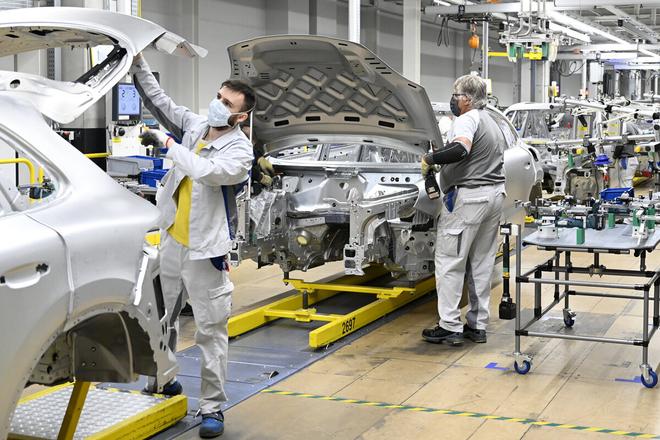The highest state investment support per one created job between 2017 and 2022 was €279,722. This equals more than 15 average annual wage costs in Slovakia.
The support was received by Volkswagen Slovakia, namely its branch in Martin. This was followed by Porsche Werkzeugbau with €142,000 per job created, equivalent to 6.8 average annual wage costs, the INESS economic think tank found out when analysing investment incentives between 2017 and 2022.
“We must note, however, that in recent years the philosophy of awarding incentives has shifted over time from targeting jobs to targeting added value and supporting new technologies, especially with the new law in 2017,” Samuel Jurčišin writes in the Investment Incentives between 2017-2022 publication.
In the case of the aforementioned investment for Volkswagen, it was support for electromobility.
Tax relief
The lowest subsidy for a job created was €5,666 for the company ZF Slovakia. This represented the cost of four average monthly wage costs.
Between 2017 and 2022, the state granted 75 investment incentives totalling more than €272 million for projects supposed to create 9,575 jobs. The average cost per created job was €28,524.
According to the category of investment support from the state, 65 percent of the incentives were tax relief, followed by a 28 percent subsidy for tangible and intangible fixed assets, and a 7 percent contribution to jobs created.
Stress on less developed regions
Investment incentives have long been perceived as a tool for reducing regional differences. In the monitored period, 53 percent of state aid was directed towards districts with above-average unemployment.
Among the regions, Košice and Trnava Regions fared the best in the volume of investments. The supported investments in these regions reached an identical volume of €360 million, where the Košice Region has had a significantly above-average unemployment rate for a long time and the Trnava Region had a very low unemployment rate for a long time, Jurčišin noted.
The Bratislava Region, which did not receive any investment stimulus in the monitored period, and the Nitra Region, which stimulated investments worth €61 million in the monitored period, were the least “successful” regions.
The analysis of the 2017-2022 data shows that the situation has changed in terms of the direction of incentives compared to the past. While the analysis of 2002-2016 data revealed that more than 75 percent of the volume of investment incentives was sent to districts with below-average unemployment, in 2017-2022, districts and regions with above-average unemployment “won” by number, noted Jurčišin. In total, 41 of the 75 granted incentives went there. However, the specific parameters of the incentives awarded, in particular the incentive per job, remain highly variable, built more or less on what investments are currently on the table, INESS points out.
“INESS continues emphasising the need to move from stimulating selected 'winners' through investment incentives to improving the business environment as a whole,” the paper closes.



 The Bratislava plant of Volkswagen. (source: TASR)
The Bratislava plant of Volkswagen. (source: TASR)